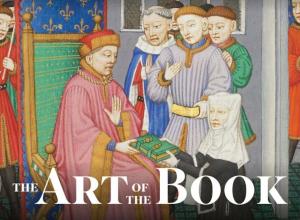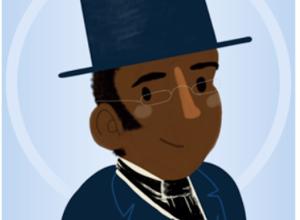Rare Independence Document on View at the N-YHS for the First Time

NEW YORK, NY, August 4, 2014—The New-York Historical Society is pleased to announce it will display an important, recently discovered handwritten document that sheds new light on the period leading up to the Declaration of Independence and the final break with Great Britain. The manuscript was discovered last summer in the Morris-Jumel Mansion in New York City, which served as George Washington’s headquarters during the Revolutionary War, and was recently acquired by Brian Hendelson, a noted New Jersey-based Americana collector. Hitherto unknown and unstudied, the manuscript will be on view at New-York Historical in the Patricia D. Klingenstein Library from August 5 through November 7, 2014 and will remain on loan to New-York Historical for purposes of study and display for two years.
Hendelson, who often loans objects from his large Revolutionary War collection to museums, states: “Half the fun is acquiring these important pieces of history, the other half is sharing them with the public. I look forward to working more with the New-York Historical Society.”
Drafted in the late spring of 1775 by New York jurist Robert R. Livingston (1746-1813), with additional text by Richard Henry Lee (1732-1794) of Virginia, the document is written as a letter from “The Twelve United Colonies, by Their Delegates in Congress, to the Inhabitants of Great-Britain” was commissioned by the Second Continental Congress as an eleventh-hour attempt to reconcile with the mother country. The document is a striking piece of testimony to the internal struggles of colonial leaders and patriots as they tried to develop a framework of reconciliation that would both address their grievances and retain an ongoing relationship with Great Britain. Scholar Michael Hattem of Yale University has said that the document is “the missing piece from the culminating moments in which the colonists began to think of themselves not as British subjects, but as American citizens.”

In 1775, Livingston was the most prominent member of one of New York’s wealthiest and most eminent families, with extensive land holdings that made him New York’s largest property owner. From his years as Chancellor of the New York Supreme Court, he was renowned for his fairness, intelligence, and rhetorical skills. Addressed not to King George III or to Parliament but directly to the people of Great Britain, the document attempts to persuade the British to concede liberty to the colonies while at the same time having the colonies remain within the protective embrace of the British Empire. His tone is both pacific and aggressive. The letter begins with acknowledgement of “the tender ties which bind us to each other” and “the glorious achievements of our common ancestors,” and is followed by a list of complaints about the infringement of colonists’ rights and a description of oppression exercised against colonists in Boston: “That once populous, flourishing, commercial Town is now Garrisoned by an army sent not to protect, but to enslave its inhabitants.”
The manuscript joins an unusually rich set of resources at New-York Historical for the study of the pre-Revolutionary and Revolutionary period, including the papers of Robert R. Livingston himself. The New-York Historical Society will complement the display of the Livingston manuscript with other contemporaneous documents that make the case for reconciliation, including John Dickinson’s draft of the Declaration of the Causes and Necessity of Taking Up Arms (1775), and Thomas Jefferson and John Dickinson’s Olive Branch Petition (1775).
About the New-York Historical Society Patricia D. Klingenstein Library
The New-York Historical Society’s research library is one of the oldest and most distinguished in the United States, containing more than three million books, pamphlets, maps, atlases, newspapers, broadsides, music sheets, manuscripts, prints, photographs and architectural drawings. The Library is one of only 16 libraries in the United States qualified to be a member of the Independent Research Libraries Association. Among its collections are far-ranging materials relating to the founding and early history of the nation; one of the best collections of 18th-century newspapers in the United States; an outstanding collection of materials documenting slavery and Reconstruction; an exceptional collection of Civil War material, including Ulysses S. Grant’s terms of surrender for Robert E. Lee; collections relating to trials in the United States prior to 1860; American fiction, poetry, and belles-lettres prior to 1850; a broad range of materials relating to the history of the circus; and American travel accounts from the Colonial Era to the present day. The Library continues to receive important research materials relating to education, philanthropy, social service, and the history of New York and the nation, among them the papers of the Children's Aid Society, the archives of the New York Sun, and significant additions to the architectural and photographic collections. In 2013, the New-York Historical Society Library was a finalist for the National Medal for Museum and Library Service.
About the New-York Historical Society
Founded in 1804, the New-York Historical Society has a mission to explore the richly layered history of New York City and State and the country, and to serve as a national forum for the discussion of issues surrounding the making and meaning of history. New York Historical is recognized for engaging the public with deeply researched and far-ranging exhibitions, such as Alexander Hamilton: The Man Who Made Modern America; Slavery in New York; Nature and the American Vision: The Hudson River School at the New-York Historical Society; Grant and Lee in War and Peace; Lincoln and New York; The Grateful Dead: Now Playing at the New-York Historical Society; Nueva York; Revolution! The Atlantic World Reborn, WWII & NYC, and The Armory Show at 100. Supporting these exhibitions and related education programs is one of the world's greatest collections of historical artifacts, works of American art, and other materials documenting the history of the United States and New York.
First image: Draft of “The Twelve Colonies by their Delegates in Congress to the Inhabitants of Great Britain,” circa July 1775. Collection of Brian Hendelson.
Second image: Gilbert Stuart, Robert R. Livingston (1746-1813), ca. 1794. Oil on canvas. New-York Historical Society, Gift of Goodhue Livingston, Jr., 1960.89















